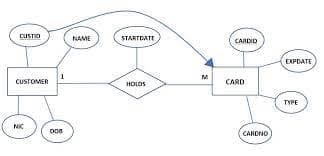Create an EER diagram to represent a museum with the information below: Note: use the attached image as a reference for what is required. The museum has a collection of art objects. Each art object has a unique identification, an artist (if known), a year (when it was created, if known), a title, an epoch (Renaissance, Modern,
1. Create an EER diagram to represent a museum with the information below:
Note: use the attached image as a reference for what is required.
The museum has a collection of art objects. Each art object has a unique
identification, an artist (if known), a year (when it was created, if known), a title, an
epoch (Renaissance, Modern, Ancient, etc.), and a description. The arts objects are
classified in the museum in several ways as discussed below:
Arts objects are categorized based on their type. The main types are: painting and
sculpture, plus another type they called “other” to accommodate objects that do not
fall into one of the two main types.
A painting has a paint type (oil, watercolor, etc.), material on which it is draw on
(paper, canvas, wood, etc.), and style (modern, abstract, impressionism, etc.).
A sculpture has a material from which it was created (wood, stone, iron, etc.), height,
weight, and style.
An art object in the other category has a type (print, photo, etc.) and a style.
Art objects are also categorized as permanent collection that are owned by the
museum (which has information on the date acquired, whether it is on display or
stored, and cost) or borrowed, which has information on the collection (from which it
was borrowed) date borrowed, and date returned.
The museum keeps track of artist’s information, if known: name, date of birth, date of
death (if not living), country of birth, epoch, main style, description. The name is
assumed to be unique.
Different exhibitions occur, each having a name, a start date, an end date, and are
related to all the art objects that were on display during the exhibition.
Information is kept on other collections with which the museum interacts, including
name (unique), type (museum, personal, etc.), description, address, phone, and
current contact person.

Trending now
This is a popular solution!
Step by step
Solved in 3 steps with 1 images

Hi can you send a clearer image of the EER diagram created?

